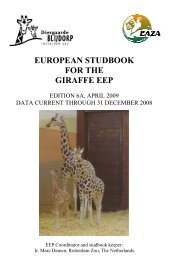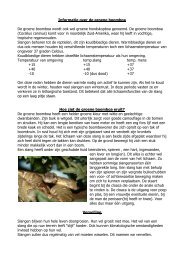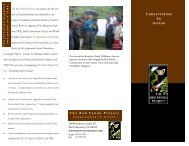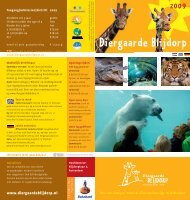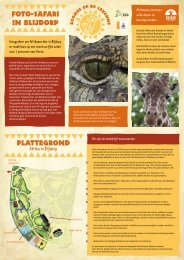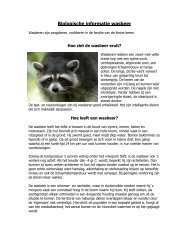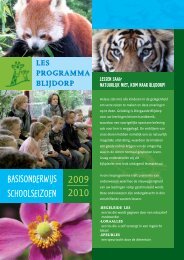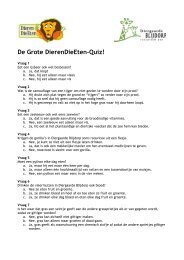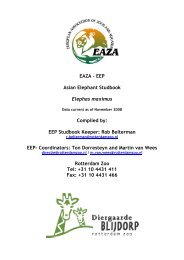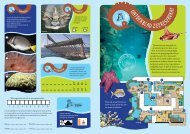Create successful ePaper yourself
Turn your PDF publications into a flip-book with our unique Google optimized e-Paper software.
<strong>EEP</strong> STUDBOOK CROWNED PIGEONS<br />
This classification is used by comparing the behaviour in the seven enclosures and every<br />
registration is placed in one of the twelve categories of Koene. After this, the percentage timebudget<br />
of every category is calculated, to enable a comparison between animals, between<br />
enclosures and between the three different types of enclosures. The means are calculated<br />
using PROC MEANS within SAS en the significant differences were calculated using PROC<br />
GLM. This latter method analysed data, which have a normal division, and GLM is able to<br />
work with a few <strong>number</strong>s of data (SAS Institute Inc., 1990). If significant differences were<br />
found, Duncan’s multiple Range test (α = 0,05) is used to find out which birds or enclosures<br />
were significant different.<br />
Observational data<br />
Using the methods described as above it is calculated, if there occurred any significant<br />
differences in time-budgets between individuals, between sexes, between enclosures, between<br />
types of enclosures. The SAS-file is available upon request from the author. Furthermore it is<br />
studied whether the behavior of the cock-<strong>pigeon</strong> and the female should correlate or not. This<br />
has been carried out using a PROC CORR according to the Spearman method.<br />
Experimental data<br />
To determine the preferences of crowned <strong>pigeon</strong>s on different types of substrate (sand and<br />
mould) the behaviour on the substrate is registered. They mainly showed four different types<br />
of behaviour on the substrate: behaviour in time, in space, metabolic behaviour and carebehaviour.<br />
With use of a Single Case Randomized Test (SCRT) it is calculated whether the<br />
birds had a preference to conduct a special type of behaviour on a special type of substrate.<br />
By conducting a Fisher’s exact test it was possible to draw more general conclusions.<br />
SCRT carries out randomizations with experiments if the sample size is one. With the use of<br />
this test the individual effect of an experiment is calculated, without doing any assumptions<br />
about other variables (Van Damme, 1995). Another advantage is, that data from different<br />
animals can be combined for analysing. Because the birds always had the choice between two<br />
kinds of substrate (sand and mould) and two types of behaviour (behaviour in time and space<br />
versus care and metabolic behaviour), an Alternating Treatments Design (ATD) has been<br />
used.<br />
The other experiment comprised changing the perches. Because the animals could only<br />
choose between a thick and a thin perch, there were more observations of just one factor on<br />
one animal. For that reason here the Restricted alternating Treatment Design (RATD) was<br />
chosen, to find out whether there were significant differences in the two situations.<br />
101



